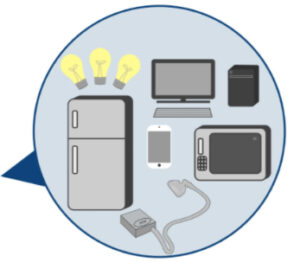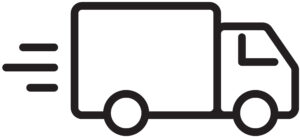5 Ways to Save Money on a DIY Grid Hybrid System
5 Ways to Save Money on a DIY Grid Hybrid System
Being without power during a utility outage can disrupt many aspects of your life, but with emergency backup or grid hybrid power you can have electricity even when your utility power fails. Since the price of backup power can add up, we’ve compiled a list of ways to help keep what you spend on your backup system cost effective.
Components of a Grid Hybrid or Emergency Backup System
Emergency backup power components can include batteries, solar, and/or a supplemental generator. Batteries, a core component for backup power, provides your home with energy storage for electricity from your solar panels, a generator or the grid (or a combination), to run loads you consider essential to operate when grid power is out. Solar panels provide dual benefits, by both reducing your utility bill when the grid is up and charging your batteries for emergency use when the grid is down. A generator can be used to charge your batteries during long-term outages in place of solar panels, or to supplement charging in solar applications if your panels aren’t producing enough electricity to both run loads and keep your batteries charged. The power components you need will depend on your goals and where you want to spend your money.
1. Limit your essential loads. Typically it isn’t cost effective to run your entire home using battery power, so carefully choosing your essential loads helps keep your overall costs down. Rather than powering multiple computers, TV’s, and appliances, carefully select the loads most important to you during an outage. These might be a few lights, your refrigerator/freezer or hot water heater, and a couple outlets for charging your phones. By reducing the amount of power you want to use during an outage, you can save money on generator fuel costs and/or on the size of your battery bank. For more information about essential loads, read Essential Loads in a Nutshell.
Typically it isn’t cost effective to run your entire home using battery power, so carefully choosing your essential loads helps keep your overall costs down. Rather than powering multiple computers, TV’s, and appliances, carefully select the loads most important to you during an outage. These might be a few lights, your refrigerator/freezer or hot water heater, and a couple outlets for charging your phones. By reducing the amount of power you want to use during an outage, you can save money on generator fuel costs and/or on the size of your battery bank. For more information about essential loads, read Essential Loads in a Nutshell.
2. Complete your project in steps.
Since batteries can be the most expensive component of a backup power system, you may decide to start with a small battery bank and increase your power storage capacity later as you decide to power more loads.
3. Add solar later. Start by adding battery backup to your home without solar, and use an alternative electricity source to charge your batteries. This is where a supplemental generator can come in handy by providing instantaneous power and charging power for your batteries. Or if you typically only experience short outages, you may choose to just use the grid to keep your batteries charged in preparation for outages, and to recharge your batteries when grid power returns.
Start by adding battery backup to your home without solar, and use an alternative electricity source to charge your batteries. This is where a supplemental generator can come in handy by providing instantaneous power and charging power for your batteries. Or if you typically only experience short outages, you may choose to just use the grid to keep your batteries charged in preparation for outages, and to recharge your batteries when grid power returns.
4. Use FMS’s system package pricing.
When you purchase your equipment and/or services from Fire Mountain Solar we discount your package off our already competitive component pricing. This means that you don’t have to spend your valuable time shopping around for the best prices on individual items.
SHOP: DIY Grid Tie Solar Kits for Battery Backup (Grid Hybrid Solar)
5. Find ways to minimize shipping costs.
If you are local to us, or one of our suppliers, picking up your product yourself may help you save on your shipping costs.

Another way to save on shipping is to have your item shipped to a local freight terminal. This can be much less expensive than shipping to your home where freight companies charge residential fees, and where you may also need to pay an additional fee for lift gave service to get the product from the truck bed to the ground.
No matter where your adventures take you, Fire Mountain Solar is here to support you and your emergency backup power goals.
